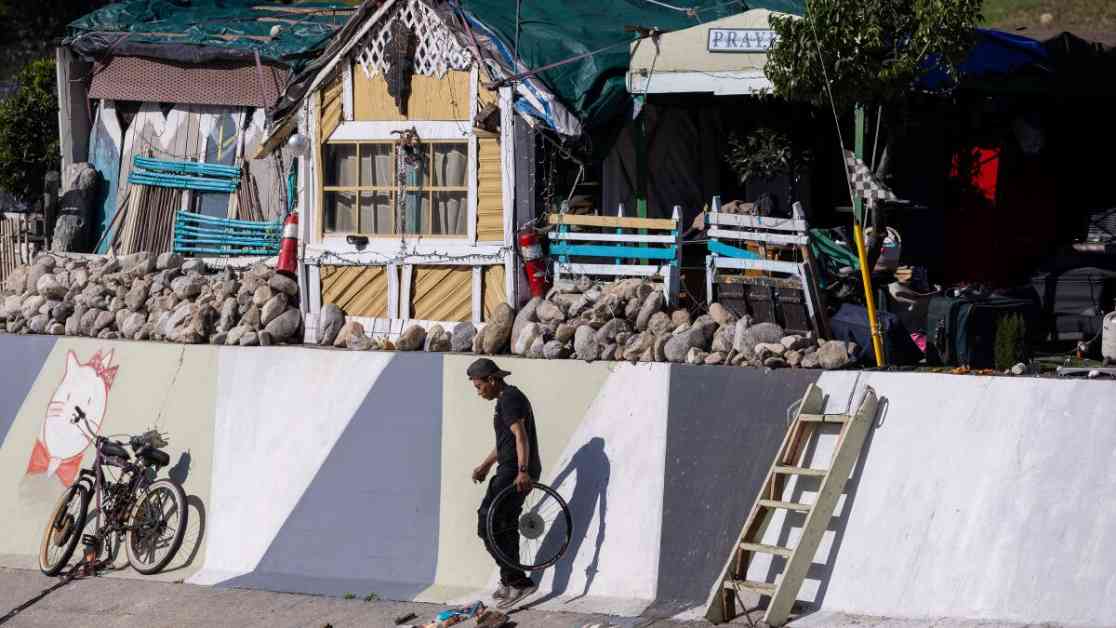After a five-year stint of calling a flood channel home, Alejandro Diaz faced the heart-wrenching reality of watching his carefully crafted abode being dismantled by city workers in Los Angeles. With tears streaming down his face, Diaz expressed his deep frustration, emphasizing the perceived injustice of the situation. This event marked the end of an era for Diaz and others who had established makeshift homes along the parkway between the 110 Freeway and the flood channel amid the backdrop of the pandemic.
The decision to clear the encampment came after the city issued warnings to residents, notifying them that their personal belongings could not be stored in a city park. The looming threat of removal was realized as city workers armed with pitchforks, shovels, and bulldozers meticulously dismantled the shelters that had become a temporary sanctuary for individuals like Diaz. While the city cited high-risk fire areas as the primary reason for the cleanup, the emotional toll on those affected was palpable.
Diaz’s viral home in the flood channel, complete with windows, bamboo fencing, and a vibrant garden, symbolized a sense of pride and resilience amidst challenging circumstances. However, the impending cleanup left Diaz and his girlfriend, Wendy, grappling with the harsh reality of losing their sanctuary. As Diaz took a sledgehammer to his meticulously crafted home, the heartbreaking scene underscored the profound impact of displacement on individuals experiencing homelessness.
As the cleanup unfolded, a sense of uncertainty permeated the air as residents like Cesar Augusto faced the grim reality of losing their possessions and shelter. Augusto, a Guatemalan immigrant who had struggled to find steady work after the death of his employer, found himself at the mercy of city officials tasked with dismantling his home. The emotional turmoil experienced by Augusto and others highlighted the human cost of sweeping initiatives aimed at clearing encampments.
Despite efforts by volunteer advocates like Elizabeth Gustafson to appeal to the city to reconsider the cleanup, the fate of those living along the flood channel seemed sealed. The sense of community and resilience demonstrated by individuals like Lorena Amador, who navigated the challenges of displacement with grace, painted a poignant picture of the human stories behind the headlines. As bulldozers flattened belongings and park rangers shouted instructions over the roar of heavy machinery, the vulnerability and strength of those impacted by the cleanup were on full display.
The unfolding events along the flood channel underscored the complex realities faced by individuals experiencing homelessness in Los Angeles County. While the city’s cleanup efforts aimed to address safety concerns and fire hazards, the emotional toll on residents like Diaz, Augusto, and Amador highlighted the urgent need for compassionate and sustainable solutions to support vulnerable populations. As the dust settled and the echoes of dismantled shelters faded, the human stories of resilience, loss, and community spirit lingered as a poignant reminder of the challenges faced by those on the margins of society.




